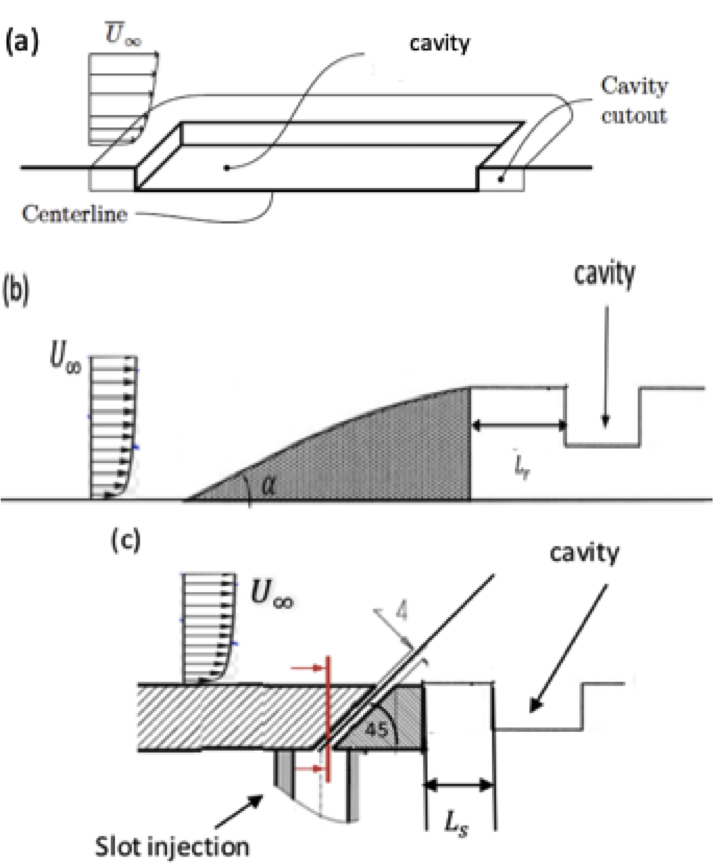
Flow over cavities occurs in several industrial situations where heat transfer is important such as heat exchangers, combustors, turbines, air cooled electronics like laptops, wind barriers for solar Photovoltaic and solar heliostat fields. Understanding of the fundamental characteristics of heat transfer in flow over cavities will help designers enhance heat transfer. It will provide insights on understanding the effect of spalling or blockage of cooling holes on film cooling effectiveness in gas turbines.
The proposed experiments will use a naphthalene sublimation mass transfer technique to measure the local convective mass transfer characteristics which can be related to the local heat transfer distribution using the Reynolds-Colburn Analogy. Five different cavity shapes will be considered in this study, namely rectangular, trapezoidal, circular-cylinder, elliptical-cylinder and spherical. Both the streamwise length to depth ratio and transverse span to depth ratio will be varied in these studies. In terms of flow conditions, the effect of Reynolds number, turbulent intensity, and flow acceleration will be varied. Further, a wall jet study in which a jet of air will be injected at an angle upstream of the cavity will be performed. This special flow condition will provide insight on how film cooling effectiveness in turbine end-wall is affected by the presence of a cavity. The experiment data obtained from this study will also serve as a benchmark for numerical simulations.